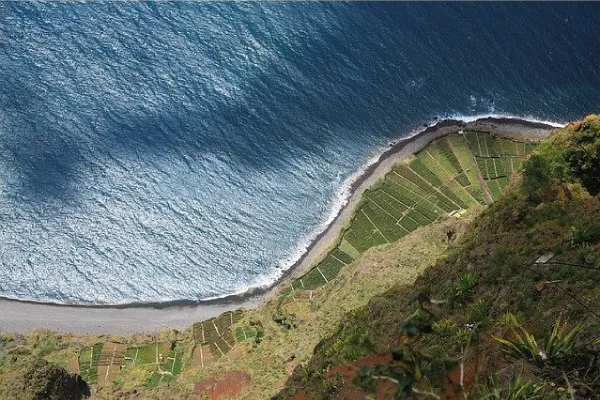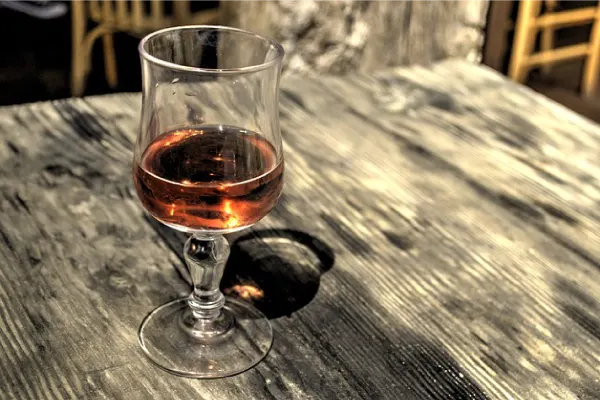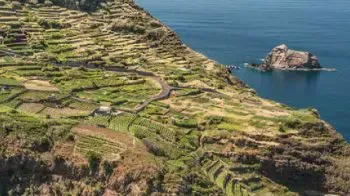Madeira Wine is a fortified wine with a high alcohol content. As its name says, this wine is produced on Madeira Island, in Portugal. Madeira Island has a subtropical climate and the soils are of volcanic origin.

History of Madeira Wine
As the name implies, the wine comes from the island of Madeira, in Portugal.
In the 18th century, the production of sugar and wine belonged to the English who lived in Funchal. However, in the year 1852, 90% of the vineyards were destroyed by a mangrove epidemic which caused seventy English establishments to leave the island. Twenty years later, what was left of the vines was destroyed by phylloxera. At the beginning of the 20th century, Madeira wine was reestablished, and in 1979 the Madeira Wine Institute was created, in which the main objective was to direct and control all wine production, in order to receive an official quality seal.
Madeira wine is nowadays appreciated worldwide. It was used to celebrate US Independence on July 4, 1776, also praised by Shakespeare in some plays and admired by kings and princes.
There are different types of Madeira Wine:
- No indication of age and variety
- With age indication associated or not with the variety: 5 years; 10 years; 15 years; 20 years; 30 years; 40 years; over 50 years
- Harvest year: Colheita or Garrafeira

Madeira Wine Varieties
There are more than 30 varieties to produce Madeira Wine, but the most used are Sercial, Boal, Verdelho and Malvasia. Sercial and Verdelho make drier wines and, for sweeter wines, the ideal is Boal or Malvasia.
Madeira Wine Winemaking Process
In the wineries of Madeira Island, the grapes are sorted to assess the health status. After being weighed and having checked the alcoholic degree, the selection of the type of grapes is made according to the type of wine desired. Then there is the transformation process, where the wort resulting from pressing is subjected to a fermentation that can be partial or total.
Later, the fortification process is carried out, which consists of stopping the fermentation with the addition of wine alcohol. The timing of when the fermentation stops depends on the degree of sweetness that is desired for the wine, with four types: dry, semi-dry, semi-sweet and sweet.
At the end of the fortification process, the wines can undergo two aging processes: estufagem or canteiro.
- Estufagem – The wine is placed in stainless steel greenhouses, heated by a serpentine system where hot water circulates for a period of more than 3 months. When the stuffing is finished, the wine ages for at least 90 days at room temperature, and from this moment on it can be placed in wooden casks until it has the necessary conditions for the winemaker to finish the wine.
- Canteiro – These wines are aged in casks, on the upper floors of warehouses where temperatures are highest, for at least 2 years. It is an oxidative aging in cask, which causes the wine to develop unique characteristics of intense aromas.
Duration of Madeira Wine after opening
A bottle of Madeira wine can hold up to 3 or 4 weeks, inside the refrigerator.
Ideal temperature for drinking Madeira Wine
The ideal temperature to drink Madeira wine, so that it does not lose its properties, is between 10º and 14ºC.
Pairing Madeira Wine with food
Madeira wine, thanks to its complexity of aromas, can be consumed at any time of the day or night. According to the variety that the wine is made of, it can be combined with different types of food:
Sercial – it is perfect as an aperitif, goes very well with olives, roasted almonds, caviar canapés or smoked salmon.
Verdelho – golden in color, it is great as an aperitif, with roasted almonds, dried fruits, creams and onion soup au gratin.
Boal – it is harmonious with fresh tropical fruits, nuts, cakes and fruit pies. It is perfect to accompany with soft cheeses and the older it is the better it combines with cured cheese.
Malvasia – combines with dried fruit cakes, fruit tarts and honey cake, dark or milk chocolate.
 Portugal
Portugal Spain
Spain France
France Germany
Germany United Kingdom
United Kingdom Monaco
Monaco



